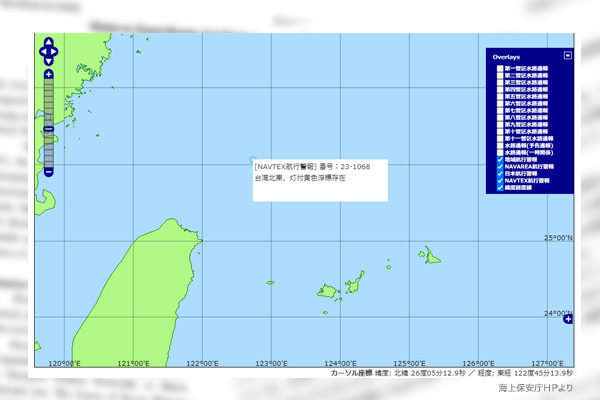The most important measure for Japan’s maritime security is to demonstrate its firm will to defend territory, territorial waters and airspace.
China’s intrusion into the waters around the Senkaku Islands has not stopped. In July, China set up buoys apparently for oceanographic observation in Japan’s exclusive economic zone (EEZ) off the Senkakus. The Japanese government recognized the fact, but did not inform the public for two months. The hasty announcement on September 19 may have been related to a cabinet reshuffle, in which Yoshimasa Hayashi who values Japan-China friendship was replaced as foreign minister by Yoko Kamikawa who gives priority to principles.
While identifying the illegal installation of the buoys, however, the government under Prime Minister Fumio Kishida has only requested China to remove them without taking any specific action as a sovereign state. For the safety of fishing and passing vessels, the government should remove the buoys on its own promptly. The government should collect the buoys and examine them in detail if only to ascertain China’s aim for the installation.
Necessary consideration for Taiwan
The location where China installed the buoys is 500 meters east from the median line between Japan and Taiwan. Since the baselines of Japan and Taiwan for setting their EEZs is different, the location is near the median line viewed from Taiwan. In responding to the installation of the buoys, the Japanese government must give consideration to Taiwan. However, Japan does not have official diplomatic relations with Taiwan.
Since it is a matter of sovereignty, the government might have dealt with the matter carefully. However, the Kishida administration should take a resolute stance towards China’s reckless act. Japan simply has to tell Taiwan that it plans to remove the buoys that have been installed by China and hinder navigation. Japan should base its assertion on the median line it has set in line with international law. Japan should diplomatically deal with Taiwan, not China. Taiwan has not officially made territorial claims to the Senkaku Islands since the signing of the Japan-Taiwan fisheries agreement (equivalent to an intergovernmental agreement) in 2013.
Learn from the Philippines
The situation in Asian waters is changing dramatically. The Philippine government under President Ferdinand “Bongbong” Marcos Jr. is aggressively moving to push out China in order to secure its sovereignty in the South China Sea. On September 25, the Philippines forcibly removed a maritime fence installed by China on the Scarborough Shoal, about 200 kilometers off Manila. In the Spratly Islands, Philippine coast guard vessels are blocking China’s efforts to build new artificial islands.
Vietnam is also actively expanding into the Spratly Islands in step with the Philippines. The Chinese Coast Guard thus has to focus on the South China Sea. In the East China Sea, therefore, China is creating a fait accompli for controlling the Senkaku Islands by taking measures such as installing buoys.
Japan should promptly remove the Chinese buoys to demonstrate its sovereignty over the area. Japan needs to ensure its sovereignty and move to develop international maritime security to maintain law and order in Asian waters. In order to keep pace with other countries, a support system with cooperation between the Self-Defense Forces and the Japan Coast Guard is required.
Yoshihiko Yamada is a director of the Japan Institute for National Fundamentals and a professor at Tokai University. He is specialized in maritime issues.


